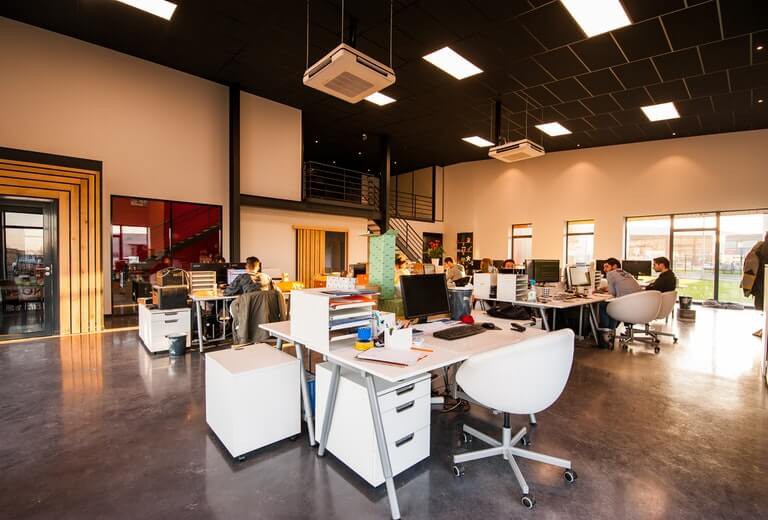Working from home during COVID-19 pandemic: lessons learned and issues

During the COVID pandemic, many companies, schools, and public organizations all around the world asked their employees to work from home i.e. to adopt what are called “smart working” modalities. This has and will presumably have a serious impact on both employees and employers, which still needs to be clarified and investigated: indeed, if smart working becomes a common working modality, this may have a significant impact on both organizations and employees. This paper reports the results of an online survey of “smart workers” in Italy during the COVID pandemic, when a great number of employees suddenly moved to working from home with no or little preparation. The study offers interesting indications about the involvement and usefulness perception of smart working by the sampled people and makes it possible to single out different categories of employees based on their attitude towards this modality. Also, it points out the potential impact on socialization among colleagues, and the consequent implications for knowledge sharing and knowledge management. From the collected responses, a fully positive or negative conclusion about working from home was not possible, nor a clear indication about the efficiency and effectiveness of this working modality. The analysis, instead, highlighted the presence of different but numerically similar groups of people, i.e. those who were not satisfied at all with the experience, those who were very satisfied, and those who were “undecided”. Furthermore, respondents underlined the importance and the difficulty to maintain working contacts and the intense use of communication systems made for this purpose. Lastly, collected opinions on positive and negative aspects of working from home provided some practical suggestions about how to successfully implement this solution.
Reasons of working from home Before the outbreak of the virus, the largest part of respondents (80.5%) declared little or no experience of SM, and a lot had simply never worked at home before the lockdown. Only a limited share (13%) had already experienced SM for 4 days or more a week. Therefore, we have a sample of people that found themselves in a totally new working condition which occurred in an unexpected and sudden way. This should be considered carefully when discussing the findings of the analysis. What is notable is, however and rather unexpectedly, that the responses of the people with a previous SM experience are not dissimilar, on the whole, to non-experienced respondents. As regards the reasons for SM, 85% of the sample indicated that they were working at home since they were ordered to do so, while 25% affirmed that they chose to do it . This confirms that the sample is made up by people with no previous experience of working from home or that they were not particularly eager to do so before the spread of the virus. . Reasons of working from home Source: Authors’ own research results Work situation and IT tools Participants were then asked to briefly outline their experience in relation to five work-related aspects as outlined in
Management & Marketing. Challenges for the Knowledge Society Figure 2. Work situation Source: Authors’ own research results More than half of respondents affirmed that, with SM, they were working longer than normally, and only around 13% declared to have less work done. Probably, this is linked to the fact that their educational background or job experience were appropriate for facilitating their new working condition (as said, more than 67% of respondents have at least a bachelor’s degree). Extremely interesting are responses to the question “is work in SM more demanding than normally?” that shows a polarized distribution between the two extreme answers of “more demanding” and “less demanding”, although the average value of responses lays in the middle (3.07) It is worth noting that most of the sample (77%) stated that they were able to keep good relationships with colleagues even when working from home. As will be shown below, this must be ascribed due to an intense use of various digital communication systems. We conducted a simple cluster analysis using as base variables the items concerning the working situation, whose result are shown in Table 2, where the average value of each segmentation variable, for the overall sample and for each segment, is indicated. Segmentation variables that are statistically different from the rest of the population are highlighted in red (lower) or green (higher). These variables distinguish each cluster from the others and identify its peculiar characteristics. Given the preliminary nature of the study, we applied the K-means clustering methods to the raw data without making any preliminary statistical elaborations (as e.g. a confirmatory factor analysis - Kaufman and Rousseeuw, 2009). Nevertheless, the results of the present and the following cluster analyses are interesting and deserve proper discussion. Table 2. Results of the cluster analysis concerning the work situation Population Cluster 1 Cluster 2 Cluster 3 Cluster 4 More hours 3.43 1.86 4.08 2.16 4.51 Less work done 1.98 1.56 1.57 3.72 2.00 More demanding 3.07 2.59 2.15 2.79 4.19 Well prepared 4.18 4.25 4.40 3.63 4.14 Good relations 3.91 4.09 4.29 2.95 3.83 % 100% 26% 27% 12% 35% Source: Authors’ own research results
Management & Marketing. Challenges for the Knowledge Society The cluster analysis identified 4 clusters that delineate realistic and plausible situations. This is a generally considered a sign of validity of the analysis (Sing, 2006). The clusters are: • Cluster 1: people who have experienced no special difficulty, were able to carry out their normal job, and to keep good relations with colleagues. This cluster comprises 26% of respondents • Cluster 2: very well-prepared people who were able perform their usual work, but by working more hours than usual. It is 27% of respondents • Cluster 3: people who were less prepared, worked less than usual but getting less work done and being less able to keep good relations with colleagues. This is the smallest one (12% of the total sample) • Cluster 4: people who perceived their work extremely demanding since they worked more hours to get the same results as usual and were less able to keep good relations with colleagues. This is the biggest one in terms of number of respondents (35%). We also made a discriminant analysis based on the demographic items included in the questionnaire, i.e. age, gender, education level, and number of children below 15 at home. This analysis did not produce any statistically significant results (i.e. clusters cannot be distinguished using these items), and hence these results are not reported here. Some implications are however mentioned in the next section. The next question was about the employment of electronic communication systems supporting SM from home (Figure 3). Email, as expected, was the most commonly and intensively used system (96% were using it always or often). Videoconference and shared online documents were very often used, other tools less frequently. Phone calls have been partially substituted by videoconference systems, very probably because these are now largely accessible, easy to use, and much richer media. Surprisingly, communication apps (as e.g. Messengers, and WhatsApp), that are very popular in private life, were little used in work context. Facebook and SMS are also inappropriate or outdated communication/interaction tools. Finally, other groupware programs are used by a small proportion of respondents. These are integrated tools that include various and sometimes special functions (email, web conferencing, chat online, video sharing, etc.) The overall picture shows that respondents resorted to a set of different systems to preserve their working relations.






